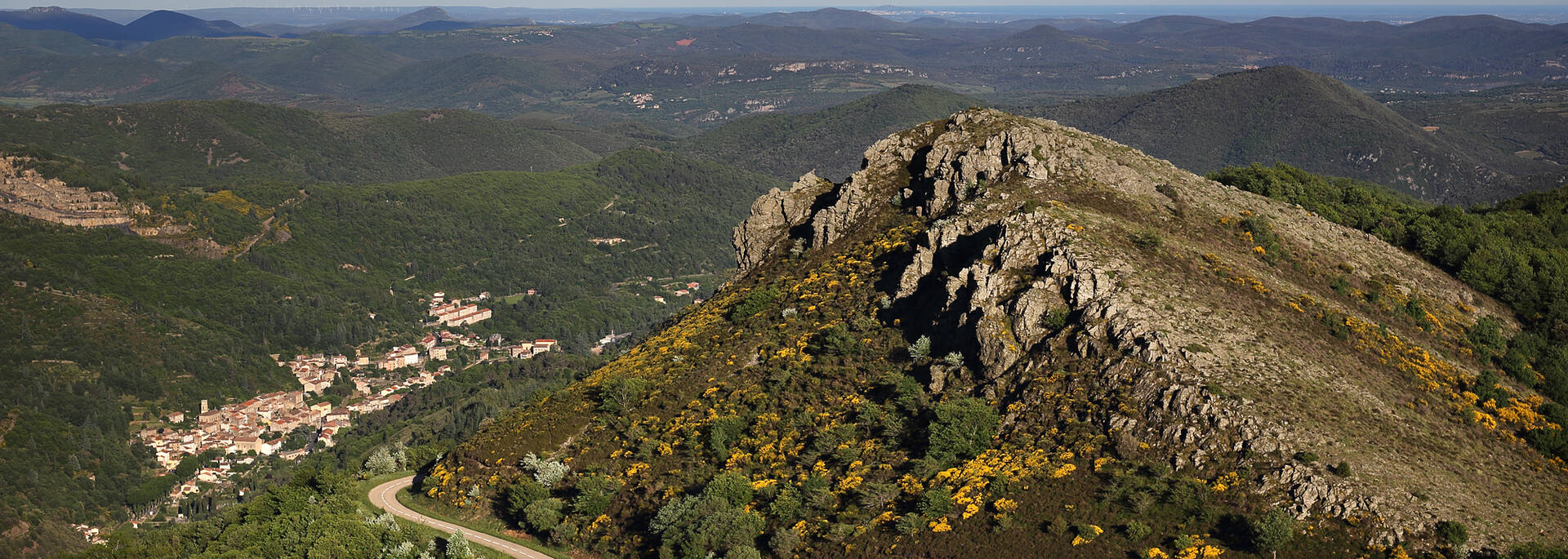The rocks and hills unveil nearly 400 million years of history, with sequences of Hercynian uplift, erosion, oceanic deposits and volcanism. From this natural alchemy in the movements of the earth, fire and water, a geological marvel was born, whose richness and variety are studied by geologists from all over the world.
From the limestone "causses" of the Minervois to the volcanic plateau of the Escandorgue, the Caroux gneiss cliffs and the alluvial plain, the rocks and landscapes tell an exceptional geological story.
A palette of colours
Red sandstone ruffes, black basalts, white dolomites, ochre earths, variegated sedimentary rocks and morello cherry marbles... The hues blend and merge creating striking and unusual landscapes with ever-changing colours. A condensed geological history for specialists and a palette of colour for artists.
The stones speak
The Pays d'Art et d'Histoire (Land of Art and History) is a treasure trove of scientific discoveries, where palaeontologists search the past for prehistoric creatures, bones or fossilized plants many millions of years old. You can see these discoveries in the collections of the many museums around the region.
The geological diversity can also be seen in the architecture and local buildings, with marble adorning the monuments and mansions, while limestone and shale have been used in less noble villages farm buildings.
The geological wealth of the country explains the presence, diversity and constant renewal of extraction industries over time. In the Middle Ages, silver made the wealth of Villemagne-l'Argentière, oil that of Gabian (long before it was a vital modern commodity it was sold as a medicine!) Two mined resources above all have transformed the landscape - marble and coal.
Saint-Pons-de-Thomières, Cessenon-sur-Orb, Laurens and Félines-Minervois
Here you'll see the quarries that best reflect the changes made by the industry on the landscape. The marble cuts in the hills are coloured as their names suggest: Rouge incarnat, Rouge antique, Noir Saint-Laurent, Skyros, Saint-Ponais, golden Kuros, Kuros mother-of-pearl, Noisette fleurie, Violet - all are cut here between Félines-Minervois and Laurens.
Coal - the Graissessac coal basin
In the north-west of our area, the Graissessac coal basin forms an elongated strip some twenty kilometres long and two to five kilometres wide. The influence of the seams can be seen in over a dozen municipalities: Lunas, Le Bousquet-d'Orb, Camplong, Graissessac, La Tour-sur-Orb, Saint-Etienne-Estrechoux, Saint-Gervais-sur-Mare, Castanet -Le Haut and Saint-Geniès-de-Varensal.







